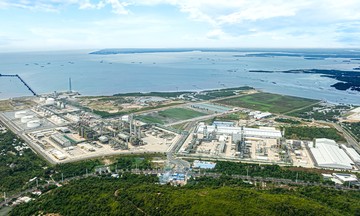This figure is up from $9.05 trillion in May. Compared to the same period last year, the number is 10% higher, equivalent to nearly $1 trillion.
Japan remains the largest foreign creditor of the US, with $1.147 trillion, an increase of $12.6 billion compared to the previous month. Following Japan is the UK, holding $858 billion in bonds, an increase of nearly $50 billion.
 |
US dollar bills in a money exchange booth in Lebanon. Photo: *Reuters* |
Analysts suggest that low inflation and slow domestic economic growth in recent years have led Japanese investors to move their money overseas. The most popular destination is the US. Although the Bank of Japan (BOJ) ended its negative interest rate policy early last year, experts believe this investment flow will not change direction soon.
Meanwhile, since March, the UK has surpassed China as the second-largest holder of US treasury bonds. For many years prior, Japan and China alternated between the top two positions.
However, this development does not reflect the UK's foreign exchange reserves. Analysts suggest it merely highlights London's role as a hub for international capital. The UK is often chosen by investment funds to open accounts to manage assets for their clients. Other locations favored by investment funds for this purpose include the Cayman Islands and the Bahamas.
The value of US treasury bonds held by China remained relatively stable in June, at $756.4 billion. In May, the figure was $756.3 billion – the lowest since early 2009.
Between 2012 and 2016, China regularly held over $1.3 trillion in US treasury bonds. Recently, the world's second-largest economy has gradually reduced its holdings to strengthen the position of the renminbi. Analysts suggest that slowing economic growth, post-pandemic challenges, and trade barriers are impacting China's export revenue.
India, another Asian nation, also reduced its US treasury bond holdings to $227.4 billion.
Despite this, foreign investors increased their investment in the US stock market, with $163 billion flowing in during June. This figure was only $115.8 billion in May.
Ha Thu (*Reuters*)












